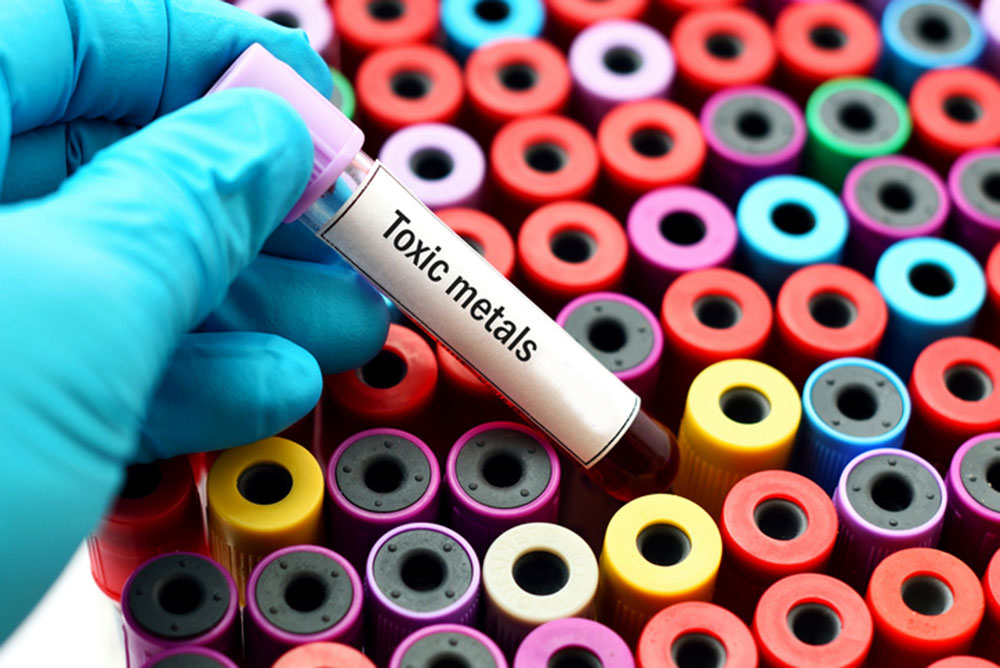
iStock
AN INCREASINGLY popular “alternative” therapy, chelation (pronounced key-LAY-shun) is used to remove heavy metals from the body through a slow intravenous infusion that takes several hours and must be repeated every few weeks for up to six months.
Enthusiasts believe chelation can alleviate everything from depression, fatigue and brain fog to Alzheimer’s, autism and multiple sclerosis, as well as stave off cardiovascular disease.
Mercury is the main concern, with increasing environmental levels linked to global air-pollution. An estimated 40% of mercury in U.S. water and soil comes from the global reservoir, which ends up in the ocean. In the northern Pacific, for example, mercury levels increased by almost 30% in the last two decades. That mercury, in turn, shows up in fish with especially high concentrations in large-prey fish like tuna and swordfish.
In addition to mercury, the most worrisome heavy metals (for which occupational exposure causes the most serious problems) include lead (from industrial processes, gasoline, old plumbing pipes and house paint), arsenic (from paint manufacturing and ingestion of pesticides) and cadmium (from discarded cell phones and batteries).
In 2012, a large multi-center study on people who’d already had a heart attack found that chelation therapy reduced the risk of stroke, heart attack, other cardiovascular problems and death by 18%.
Orlando Florida cardiologist Kirti Kalidas believes chelation should be part of regular routine care for heart patients. For one round of chelation—which takes from six weeks to six months–Kalidas charges $3,000 to $4,000, which she considers “considerably less than bypass surgery…well over $40,000,”although generally it’s not covered by insurance.
Immediate warnings about the multi-center research came from the study’s lead author, Cleveland Clinic cardiologist Steven Nissen, who called it a dangerous failure. Critics of the study noted an unusually high number of people dropping out, as well as little regulation at many of the “alternative medicine” clinics involved.
The results “should not be interpreted as an indication to adopt chelation therapy into clinical practice,” said one American Heart Association physician.
Even the godfather of “alternative” or “integrative medicine,” Harvard M.D. Andrew Weil, is “skeptical of claims that chelation therapy is an effective treatment for cardiovascular disease and the many other conditions…”
Along with most in the medical profession, Weil supports “conventional medical usage” of chelation to remove toxic levels of heavy metals from the body. Lead poisoning most often affects children between one and three years old, although with growing awareness has been occurring less often. In one of the few recent outbreaks of heavy metal poisoning in the U.S., the culprit was imported plates and cookware insufficiently coated to prevent metals from contaminating food.
In chelation therapy, a medication, or “chelating agent,” is delivered intravenously into the bloodstream, where it binds with and carries minerals out of the body, including the calcium contained in fatty deposits in the arteries. Removing calcium can sweep away this “plaque” but can also lead to deadly low calcium levels in the blood, described in a 2006 CDC report on the death of three people.
A very slow rate of infusion enables constant monitoring to help avoid excessively removing minerals essential to bodily function, but is the reason that each session takes so long —more than three hours or more are required by the NIH, and multiple sessions over time are needed. Side-effects of the therapy include diarrhea, nausea, vomiting and skin rash.
“Before scientists became aware of the toxic effects of mercury—it poisons the kidneys and nervous system—this seemingly magical metal was widely used in medicine, cosmetics and industries like hatmaking (an explanation for the term “mad hatters”), according to the Mercury Guide of the National Resources Defense Council (NRDC).
An ongoing worry is the mercury used in amalgam fillings, which some people have extracted and replaced. The current advice, though, is against removal because the process releases more mercury than that emanating from the fillings.
Mercury is also found in compact fluorescent lights (CFLs), those twisted spirals labeled “lamp contains mercury,” although the NRDC traced the highest levels of lightbulb-related mercury to conventional incandescent bulbs. For comparison, old mercury thermometers contain 100 to 200 times more mercury than today’s CFLs.
On the other hand, new efficiency standards are met by both halogen incandescent and LED bulbs, which contain no mercury. For light bulbs, thermometers, and anything else containing mercury, the important concern is proper disposal.
The number one cause of mercury exposure in America, however, is “eating contaminated fish,” according to the NRDC. In addition to swordfish and tuna, the highest concentrations are found in tile fish, shark, orange roughy, and king mackerel. Current advice on canned tuna is to consume no more than three cans of “light” tuna per week, and no more than one can of “white” (albacore).
Avoiding risky fish may be sufficient for maintaining safe heavy metals levels in the body—at least until further research more clearly establishes the benefits of chelation therapy, filling removal and other medical interventions.
—Mary Carpenter
Mary Carpenter writes in this space every Tuesday on matters of health.

Really informative. These articles are important to our health and well-being. Much appreciated.